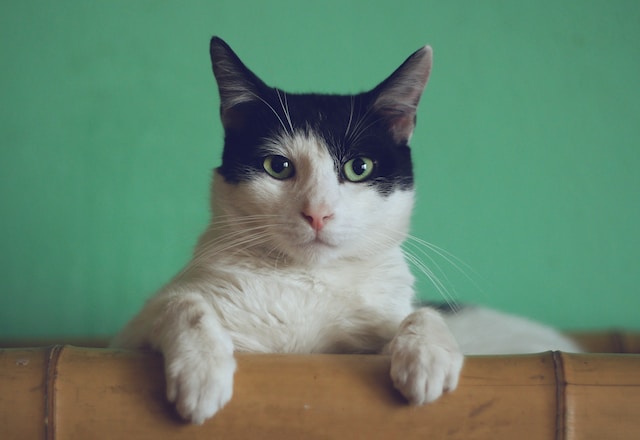While the myth that cats can’t be trained is slowly becoming less common, some people still don’t think that cats can be trained or that cat behavior is unchangeable. Fortunately, they’re very wrong as cat behavior training is very achievable. While the process can be complex and specifics vary, let’s go over when training can be used to modify your cat’s behavior and some ways that training cats can be used to address unwanted behaviors.
How Do You Train Cats?
First, how does one train cats? Cats are really responsive to positive reinforcement based training. This means that you give cats something they really like and are willing to work for in an effort to increase a behavior you want them to be doing. Positive reinforcement is the basis of effective cat behavior training as it’s fun for the cats, fun for the humans, and more effective than other methods.
When trying to address an unwanted behavior, you need to figure out what the underlying reason for the behavior is. This will help you decide where to start with the cat behavior training. A few examples of underlying problems include:
- Stress or boredom
- A behavioral need not being met
- Fear
- The cat being unsure what to do in a particular situation due to lack of experience with that situation or age
- Accidentally reinforcing unwanted behaviors
Depending on the reason for the unwanted behavior, this will help you decide what you want to train and how to approach the situation. You can then decide on what behavior or behaviors you want to train to help your cat. You can train a behavior that is an acceptable alternative, that is incompatible with the behavior you don’t want, or, in some cases, it doesn’t matter what you train your cat to do as the training itself is helpful.

What Can Cat Behavior Training Help With?
Cat behavior training can help with a lot of unwanted behaviors. In fact, when working with clients to address unwanted behaviors, I often use training for a variety of behavior problems in their cats. Common scenarios where I use training to help clients and their cats:
- Teaching a behavior like high five to address aggressive behaviors
- Helping a cat learn to not run at another cat when addressing fighting cats
- Helping cats learn to get their nails trimmed willingly
- Address annoying behaviors like begging for food
- Reducing stress in cats or working to solve boredom
In other words, there are a lot of ways cat behavior training can help you cat!
What Isn’t Training Helpful For?
There are a few situations that training won’t be as helpful with and in many cases, training is only part of an overall behavior modification plan. That doesn’t at all mean that the behaviors can’t be addressed, it just means that approach needs to be a bit different.
One of the biggest behavior problems that training doesn’t help with is cats not using the litter box. Most cats don’t need training to help them using the litter box. Instead, it’s best to change things about the litter box or head to your vet to make sure there isn’t a medical reason for your cat not using the litter box. If you need help figuring out what that reason is, I’m available for consultations.
Training Is Part Of An Overall Plan
For other cat behavior problems, training can be helpful as part of the plan, but the bulk of what we do are other interventions. For example, when addressing destructive scratching the bigger problem is usually environmental modification or adding in a high quality scratching post rather than training your cat. That said, in some cases we can use training to encourage your cat to scratch a scratching post or to interrupt them scratching in a way that is less problematic than using a spray bottle on your cat.
In other situations, we may use processes known as desensitization and counter conditioning. These help with getting cats to be less reactive to things that are fearful or stressed out by such as other cats or getting their claws clipped. We may also combine methods like getting an automatic feeder and using training to get your cat to learn some self control around food if they are experiencing food aggression.
How Can You Get Started With Cat Behavior Training?
If you’re having cat behavior problems, you’re probably frustrated, confused, and not sure what to do. You can start out attempting some cat behavior training on your own using some of the information on my blog or order a clicker training kit to get started with basic training. Clicker training can be especially useful for addressing stress and boredom in your cat.
If you’re looking for professional cat behavior help, I’m available to get you started on cat behavior training. Regardless of what you’re looking for help with, I can meet virtually wherever you are located or, if you’re in the Twin Cities, in home consultations are an option.










